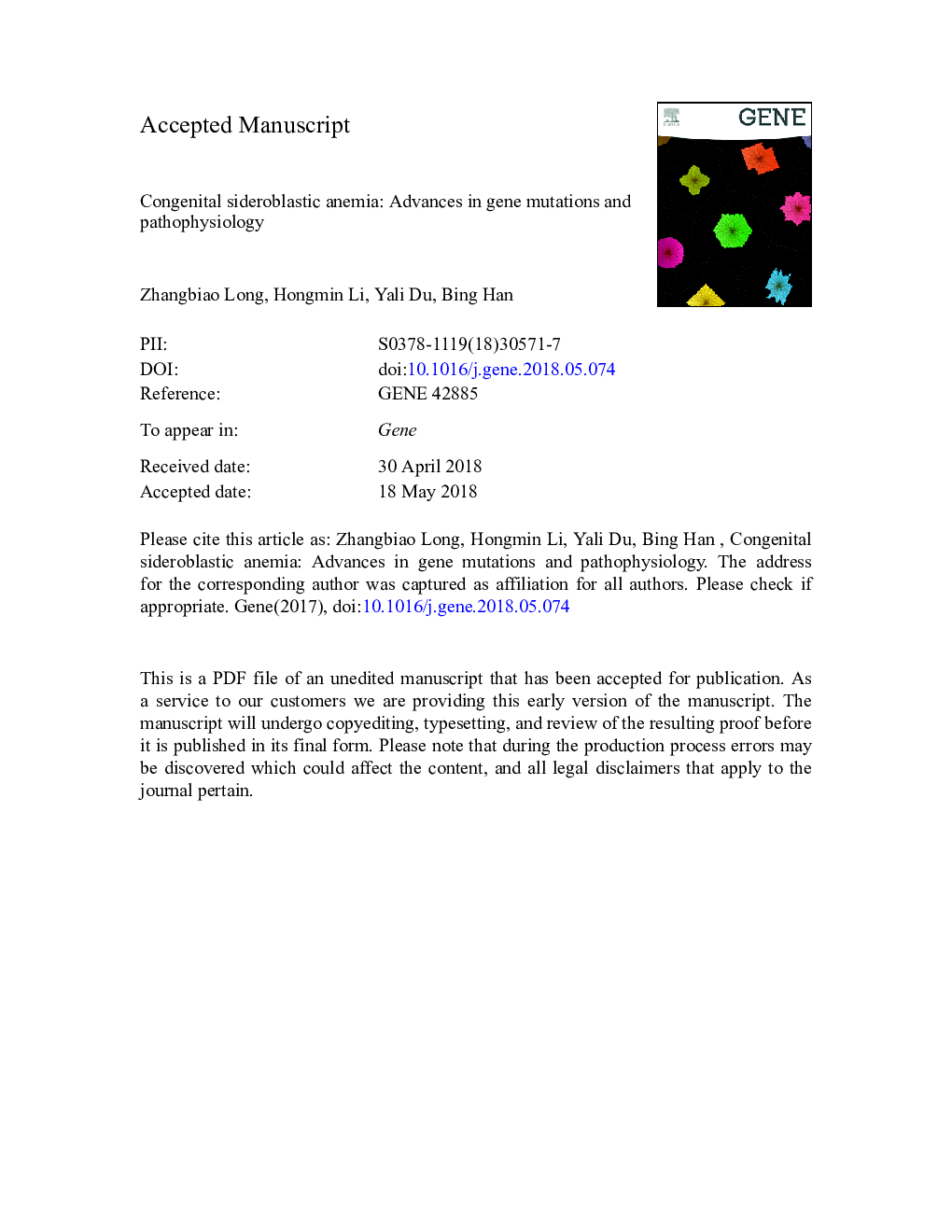| Article ID | Journal | Published Year | Pages | File Type |
|---|---|---|---|---|
| 8644766 | Gene | 2018 | 26 Pages |
Abstract
Congenital sideroblastic anemia (CSA) is a series of rare, heterogeneous disorders, characterized by iron overload in the mitochondria of erythroblasts and ringed sideroblasts in bone marrow. In recent years, rapid development of next-generation sequencing technology brings great advance in understanding of genetic and pathophysiologic features of CSA. Based on the pathophysiology of mitochondrial iron metabolism, causative genes of CSA can be divided into three subtypes: heme biosynthesis related; ironâsulfur cluster biosynthesis and transportation related; and mitochondrial respiratory chain synthesis related. Patients with CSA present various clinical manifestation due to relevant mutation gene and require different treatment strategies. The recognition of the causative genes and evolution of pathogenicity is critical. In this review, we summarize the recent progress in mutation genes of CSA, and its potential role in the pathogenesis, diagnosis and treatment.
Keywords
COATrmAIscUIRP1X-linked sideroblastic anemiatRNAPMPsALASferrochelataseFECHIREPLPEPPrRNAALAXLSACCAribosomal RNAsMLASAFe-SHSPA9ABCMitochondrial DNAδ-aminolevulinate synthaseCSAmtDNAiron-responsive elementIron metabolismMLsPathogenesisIron regulatory protein 1Pyridoxal 5-phosphateGenecongenital sideroblastic anemiathiamine-responsive megaloblastic anemiaATP-binding cassette
Related Topics
Life Sciences
Biochemistry, Genetics and Molecular Biology
Genetics
Authors
Zhangbiao Long, Hongmin Li, Yali Du, Bing Han,
